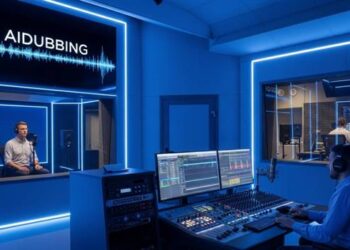The internet, as they say, is a gateway to a wide variety of information and ideas. It is also a great place to find the best graphics and web design resources to improve your designs and projects. However, before diving into the internet searching for these resources, you need to have a little knowledge of what you’re searching for. Here, we have gathered a list of the major design elements and resources that will boost your designs to the next level. These resources are the foundation of every design project that you may ever come across.
Vectors
Vectors are a series of coordinates and numbers that describe the attributes (such as position, size, and color) of 2D graphics. The great advantage of vectors is that they are not pixelated when enlarged and can be modifiedwith colors in a very simple way. Once you learn how to handle them, an almost infinite field will open up when designing.
Vectors can be downloaded, modified, or created from scratch. If you’re considering where to get vectors for your design, there are countless sites where you can download vectors. Some of these sites are paid while others are free
Occasionally, paid designs tend to be cooler, but you can also find interesting illustrations that are free to modify and add your personal touch. A good place to start will be VectorFair as they offer loads of vector designs ready for download.
Mockups
In graphic design, a mockup is a model of how the final printed product will be. The characteristics of a mockup are that it must explicitly explain what is needed for the product to be designed completely.
In traditional mockups, a sketch is available in a schematic way where the visual elements are worked on. With the emergence of digital design, new concepts have emerged such as the text ” Lorem Ipsum ” or low-resolution images that help advance the project in the absence of receiving the final content.
Before recent times, creating mockups has often proven difficult for many designers. With the increasing number of design mockups offered on graphics resources sites around the globe, designers can easily select a mockup design that suits their project.
Icons
An icon is a sign, which through a relationship of similarity, can represent a certain object or a brand. When we talk about an icon, we usually refer to a symbol. An icon is something that can be interpreted as the graphic representation of a concept. It is an image that replaces an object through its meaning, a representation, or an analogy.
Over the last few years, icons have become a highly studied area. This has led to the establishment of certain scales, or rather degrees so that it can be better analyzed. Every day, there are more innovations in icons, such as 3D icons, which allow us to see an in-depth orientation of the image. Thanks to these daily innovations, we can visualize and develop any icon we need, whether for a theme or project.
Backgrounds
Graphic designers often agree that the background is the major foundation of any project. When starting a new design, choosing the perfect background is a top priority for designers. The right background on your design will make your template fascinating while adding depth to the message you’re trying to pass across with your design. Backgrounds are majorly images that carry the other design elements created by the designer.
Many designers create thousands of backgrounds daily. Somecreate these backgrounds for commercial purposes which include selling them off to others. Thanks to the vast use of the internet, designers can easily access these resourcesto choose the best backgrounds that fit their projects.
Infographics
Infographics are a way of representing information visually with diagrams, images, or icons. Infographics respond to different models, such as diagrams, concept maps, among others. Likewise, they use different types of visual resources, both linguistic and non-linguistic. This often includes text, images, colors, layout criteria, and compositional elements.
It is a widely used resource both in the daily press and in magazines, graphic designs, web pages, social networks, and informative publications. Creating infographics for your design isn’t much of a big deal. However, you can now access thousands of pre-designed infographics on the web. Some of these infographics are free, while some may require you to make payments before accessing them.
Fonts
When creating graphic designs for a website, most designers do not pay much attention to fonts. Unfortunately, fonts bring real added value in terms of design and contribute to the creation of your personalized design. Fonts form a big part of your brand and the overall look of a website.
They relay an atmosphere for your customers, which is why we advise designers to personalize their fonts. Fonts are the styles or models of letters. On the internet, we can find very original fonts, suitable for titles or posters and others that stand out for their readability. This allows the texts to be comfortably read both on screen and on paper.
Conclusion
When it comes to graphics or web designs, getting familiar with design elements and resources is the first step to becoming a professional. Thanks to the internet, design resources are now easily accessible for designers who have limited time to create elements from scratch. From icons to mockups, infographics, background, fonts, and vectors, each of these resources can be easily gotten from resource sites on the internet. VectorFair is one resource site that we highly recommend for both beginners and professional designers. With these resources at your fingertips, your designs and projects will experience an enormous boost.
Graphic resources by Vectorfair






